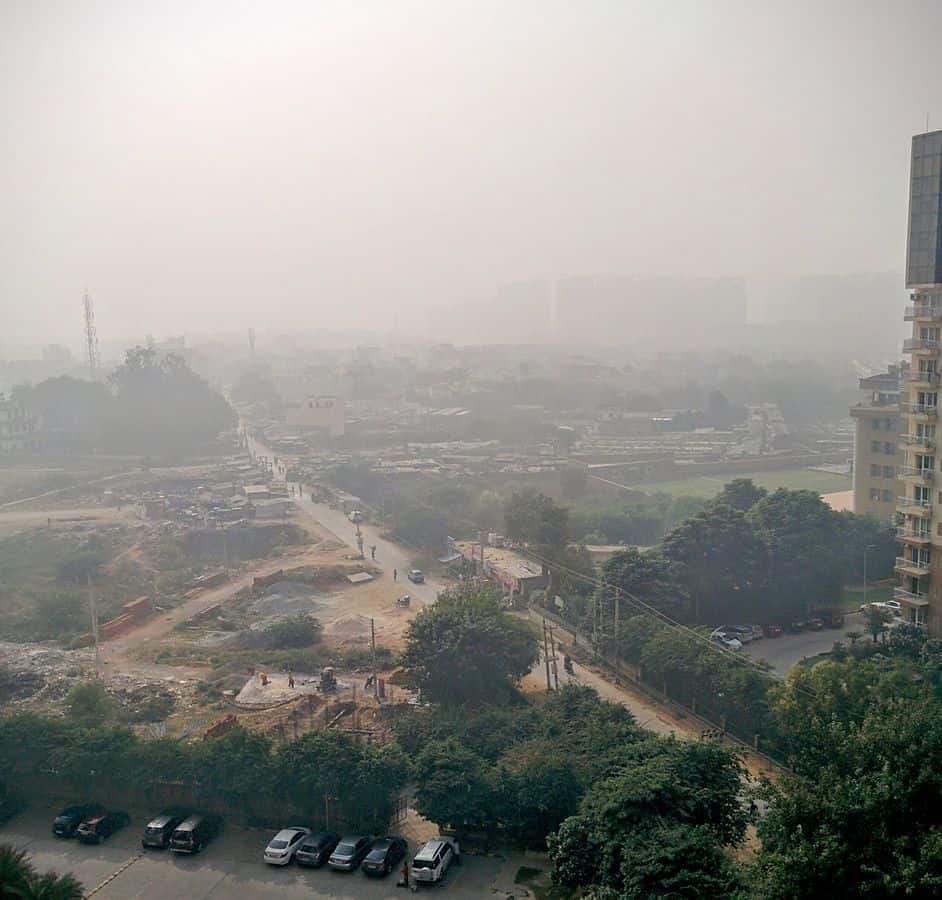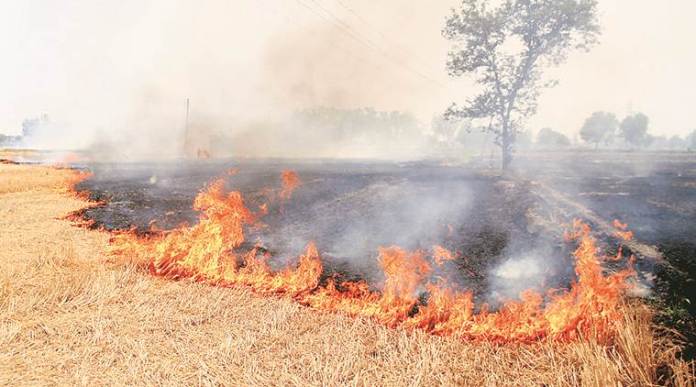“I was thrilled when the government issued an ordinance to control air quality in the NCR,” says 76-year old Mithilesh Kumar of Seemantak Vihar near the Delhi-Ghaziabad border. But as crackers shattered the relative quiet of his area, Mithilesh, an asthma patient who thought he was safe this year from cracker smoke polluted air, wanted to lodge a complaint with the new commission. “But I did not know whom to complain to. My grandson tried to find out from the net, but could not.”
Not far away, Chandra Aggarwal, 43, was so gung-ho, she had hoped her use of nebulizer twice a day would not be needed. But in vain. “Diwali firecrackers last two days, paddy burning a few more,” says Chandra. “But the dust from construction works, diesel fumes, industrial pollution etc are permanent. These are what the Commission has to put a full stop to.”
Like Mithilesh and Chandra, thousands of residents in the NCR are pinning their hopes on a powerful commission to end the grey and pungent fumes of the Delhi smog, and paint the skies a bright blue.
Yet, almost three weeks after Solicitor General of India Tushar Mehta, told the Supreme Court on Nov 6th “the Commission will start functioning from today”, the Commission on Air Quality Management (CAQM) in Delhi and surrounding areas, has yet to notify the rules and regulations under the Ordinance.
It has not even informed the public on know how to lodge a complaint — whether by physical post or mail and to which address or ID — and in what format. There is also no existing website of the Commission, though the latter has been in the making for almost a year now.
In fact, the only CAQM meeting outcome shared with the public so far by the Press Information Bureau on November 9th said the Commission “met and reviewed the air quality scenario in the region, actions taken by various agencies so far and further steps to be taken for improving the air quality”. According to the press release, while future action would be based on consultation with various stake holders, it stressed the “need to strictly enforce existing laws, rules, guidelines, directions and standard operation procedures to minimize air pollution on an emergency basis”.
Ironically, on November 9th, five days before Diwali, the NCR was choking, with the Air Quality Index at the “hazardous” level. In Delhi it was 447, in Noida, a planned and till recently one of the most liveable cities, it was 482 and in Gurugram, the “millennium city” that is meant to rival Bengaluru as the IT capital and stand alone as a corporate capital, it was 500. Meanwhile, the Commission issued homilies on “active public involvement by restricting travel unless essential, work from home, spray water to manage dust etc”.

Ineffective EPCA
As the district administrations in Delhi and NCR were running around trying to enforce the NGT order banning firecrackers, the now-dissolved Environment Pollution Control Authority (EPCA) directed state governments to implement the Graded Response Action Plan (GRAP) formulated earlier, all without any avail. Delhi chief Minister Arvind Kejriwal, obviously under more public pressure than any other leader, attempted to stop the paddy stubble burning, one of the main causes of pollution in the NCR.
No one really expected the CAQM to immediately clear up the infamous smog and have the AQI show “moderate” or “unhealthy for sensitive groups” level. But everyone in Delhi and surrounding areas wants it to work and would like to pitch in however possible. But they will have to wait and hope it starts work and shows results by next year.
“Once the CAQM comes out with its procedure, rules and regulations, we will know how it will work,” says Shibani Ghosh, an environmental lawyer and Fellow at the Delhi-based think tank, Centre for Policy Research.
With its countless missives over the years, the EPCA, whose chief — the indefatigable former bureaucrat Bhure Lal — visited every pollution hotspot, failed to achieve anything substantial.
In August, the EPCA’s “Industrial Air Pollution Action Plan for Gurugram District” had noted that the automobile (with 16 large scale units in the district), textiles and food sectors were responsible for 33%, 26% and 21% respectively of the overall pollution load in the district. It had proposed that the few large-scale industries in the sector, responsible for major fuel consumption and pollution load, should be checked for compliance on emission standards every month.
The EPCA also noted that the food sector which included four breweries and distilleries, five agro-based industries, five fruit and vegetable processing industries, and three dairy plants among others, had been a major polluter for some time now.“We have told the UP government to convert all buses coming in to the NCR to CNG and electric vehicles,” Bhure Lal told this correspondent a few weeks before EPCA was dissolved.
The EPCA which had almost all the powers that the newly created CAQM has, however did manage to get favourable orders from the Supreme court to which it reported, and those orders kept the state governments and implementing agencies on their toes — be it on clean fuel or ban on paddy straw burning.

“Whatever little happened because of EPCA, was because it was answerable to the Supreme Court,” says Ritwick Dutta, environmental lawyer and founder and managing trustee of Legal Initiative for Forest and Environment (LIFE). “Now even that arrangement does not exist as far as the new body is concerned.”
Under the CAQM ordinance, civil courts have no jurisdiction on any matter of the Commission. Aggrieved parties can appeal against any of the Commission’s orders only before the NGT.
CAQM: Pros and cons
What the CAQM has, but EPCA did not have, are full time members comprising chief secretaries, principal secretaries and environment experts. While that may sound like power that can banish smog by dealing with any pollutant source, Dutta emphasizes that being primarily a bureaucrats-packed body, selected and appointed by the Centre, “it will be as powerful or as weak as the Central government wants”.
The question then is, will the body of secretaries take action against their own ministries that are not enforcing steps that will make for clean air?
A few days into the Ordinance, the hope that the CAQM will ensure the NCR has clean and breathable air has led to introspection on what went wrong with the EPCA which, according to Dutta, has not filed a single complaint for violating provisions of the Air Act and Water Act before a magistrate in its 22 years.
There are also discussions around the possibilities that come with the new Commission. Shibani believes that it provides space for coordination. “The commission provides the bureaucratic space for discussion across ministries, Centre-states, state-states,” she says, while concerned over the haste with which the Ordinance was promulgated without any public consultation.
According to Shibani, the lack of such inter agency coordination has remained a problem all these years. If the Commission and the government want to seriously deal with the problem of air quality in and around the national capital, serious headway can be made –because it has several powers that could lead to robust decision making through inter agency coordination. “While the judiciary had stepped in with short term measures, the CAQM has the mandate to look at problems with a long-term perspective,” she points out.
There is one other advantage that comes with this power-packed overarching body for the NCR. Citizens will know whom to blame when the smog refuses to go away over time: finite time.